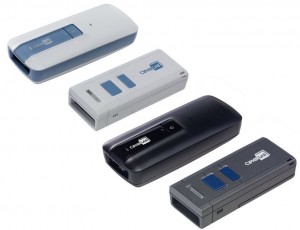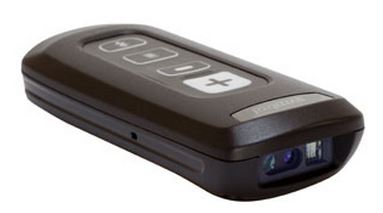
What is a pocket scanner?
First of all, that’s not an official name, it’s merely descriptive of the form factor. Small, compact, pocket-sized. Some companies don’t call them anything but their model number, some refer to them as pocket-sized. The form factor is certainly not new. Symbol had a CS scanner 10+ yeas ago, before it was Motorola and when Bluetooth was in its infancy. The original CS scanner stored barcodes into memory to be later downloaded to a host, via serial or USB port. The primary application was gift registries. You could hand a customer a relatively inexpensive scanner that they would use to scan items into their gift registry. I don’t recall if it previously had a different model number, but the CS1504 memory scanner is still available today. The Consumer Scanner of yesterday has evolved into the Companion Scanner of today, the CS4070.
Who needs a pocket scanner?
A Bluetooth pocket scanner is primarily targeted to mobile workers who need to do enough barcode scanning to make using a digital camera integrated into a tablet or phone impractical, but do not want or need to carry a dedicated mobile computer for barcode scanning. Healthcare is another target industry, as nurses can easily pocket a compact scanner after scanning patient barcodes, rather than returning a traditional gun-style scanner back to a cart between uses.
Why would someone use a pocket scanner?
The primary need for a Bluetooth pocket scanner is due to the proliferation of tablets and smart phones. Back when that original Symbol CS-series pocket scanner came out, nobody carried their own personal mobile computer (handheld device, not laptop). Today, most people in the US do. The barcode scanning industry would love to have every mobile worker who scans barcodes carrying a dedicated mobile computer with integrated scan engine, but it’s not practical. People want to carry less stuff, and while a pocket scanner is still another device, it’s more convenient to carry than a mobile computer and much better at scanning barcodes than a phone camera doubling as a barcode scanner.
Bring Your Own Device (BYOD) is popular because people don’t want to carry duplicate equipment. Nobody wants to carry a mobile computer that is their phone and another mobile computer that is their barcode scanner. Companies struggle with their mobile worker’s need for comfort and convenience and their own need for control and security. Data collection companies then, have to have solutions for both data collection mobile computers that can be practically used as phones such as the Honeywell Dolphin 70e Black, the Intermec CS40 and the Motorola TC55 as well as pocket-sized dedicated barcode scanners that can pair to consumer products running iOS, Android and Windows Phone. The need for the latter is what’s driven the pocket scanner from a niche product to a mainstream one.
